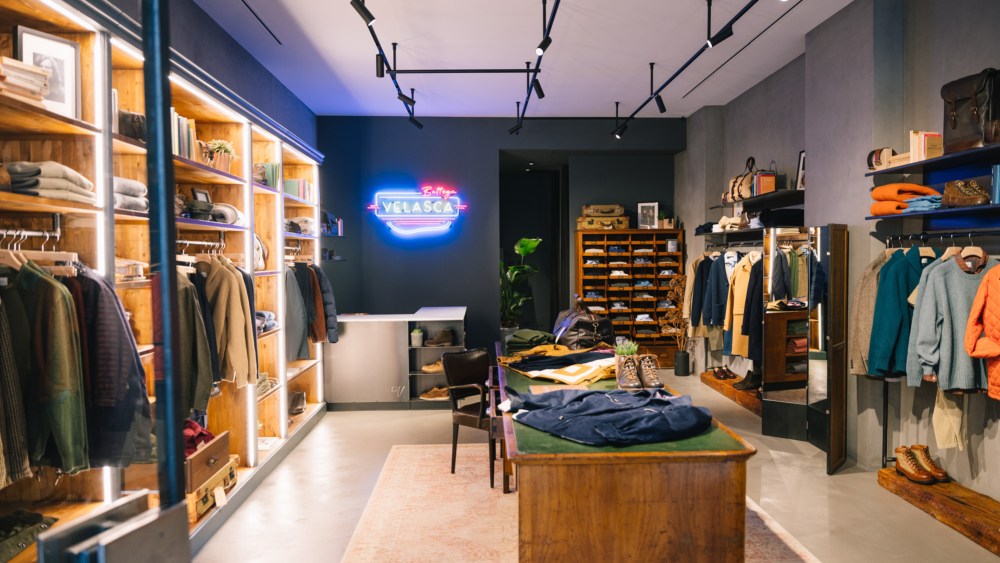MILAN — Velasca is investing in its retail expansion, as it further develops its apparel collections.
Established in Milan in 2013 as a direct-to-consumer men’s brand by Enrico Casati and Jacopo Sebastio, Velasca has been ramping up its offer with a ready-to-wear line and women’s footwear.
The economy hasn’t dampened the growth of the company, which is expected to close 2024 with sales between 23.5 million and 24 million euros, up more than 9 percent compared with 22 million euros in 2023. This compares with revenues of 13.5 million euros in 2021 and, in an interview, Sebastio said he believes Velasca has not shown its full potential yet, adding that sales are expected to reach between 27 million and 27.5 million euros in 2025, also boosted by the retail expansion.
In July, Velasca opened a total look store in Rome, next to the brand’s footwear unit that had opened in 2016, followed by stores in Verona and Padova in October, also carrying apparel in addition to footwear.
In the first quarter of 2025, Velasca will open stores in Munich, Copenhagen and resort town Forte dei Marmi. In Paris, where there is already a store, Sebastio said two additional units will be unveiled in Saint-Germain-des-Prés and in the La Madeleine area.
“In addition to our store in NoLIta, we have signed for a second store in New York on Madison Avenue, carrying apparel and shoes,” Sebastio said. “We are also looking for a second store in London that we would like to open by the end of 2025 but we have not found the right location yet. The goal is to have between 30 and 31 stores by the end of 2025.”
All stores are directly operated and sales are split evenly between brick-and-mortar and e-commerce, as the company started as a pure online player.
Velasca has two private equity investors, P101 and Milano Investment Partners. Asked about a potential exit given the 10-year support, Sebastio admitted this is a “phase where preliminary talks” are taking place between the founders, who together own one third of the company, and the investors.
“There will surely be changes in the next two years, but business is doing well, so things should go smoothly and I believe we will find a way, either with another financial or industrial fund, or maybe we could even buy back shares. We are open to all different solutions,” Sebastio said.
The founders’ background is in corporate finance, debt restructuring and private banking. Sebastio supervises retail, finance and an in-house team of three designers for product consistency, he explained, as the brand was first inspired by his own and his father’s wardrobe. Casati is more focused on marketing, communication, operations and logistics.
Born as a brand with the mission of connecting Italian artisans with global consumers, production is all made in Italy, in particular footwear in Montegranaro, in the Marche region, a shoe manufacturing hub. Likewise, garments are produced in a region specialized in each category, such as knits in Emilia, shirts in Apulia, jackets and outerwear in Veneto, and pants in Campania.
The Velasca store in Verona
Given the product expansion, the new stores are becoming larger. “We started with the concept of bottega [workshop] so the size spanned between 324 and 648 square feet, but now we eye spaces ranging between 1,000 to 1,500 square feet,” Sebastio said.
As for the location, he said “we try to be where our customer is, for example in Milan we are in a residential area, next to a storied bar and a well-respected school, we offer tea or a juice and flowers to our customers, working with the stores next to us.” He touted that all Velasca stores are operating at breakeven, and that “we benefit from the online channel as the conversion rate doubles if we open stores where our e-commerce is already strong.”
Sebastio attributed Velasca’s growth also to a shortened pipeline, and said that a direct-to-consumer model helped offer quality products at a fair price. As an example, he said that Velasca shoes in Cordovan leather, among the most expensive for the brand, retail at 720 euros, “half the price tag of our competitors.”

Velasca fall 2024
The other “fundamental element” is the strong relationship established with the brand’s customers. “We invested in communication and marketing, from Day One and on a daily basis,” he said.
Men’s apparel has grown to represent 30 percent of sales, compared with 15 percent last year. The men’s division is still the lion’s share of the business, accounting for 85 percent of the total.
While Velasca is mainly known for its high-quality men’s formal shoes, brogues and derbies or monk straps, during the pandemic the company invested in the development of more informal styles, in particular boat shoes for summer and booties for winter.
Several men’s designs were revamped with a women’s fit, but new footwear options were also introduced, such as equestrian boots and more feminine flat mary janes.

Velasca fall 2024

